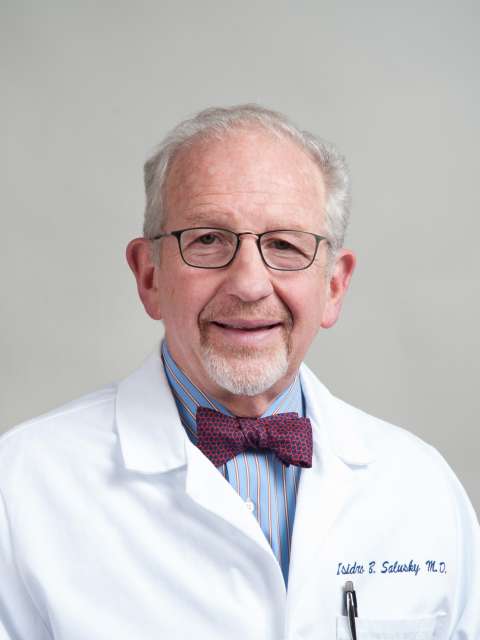Summary
An infant is born with no complications in a hospital in Los Angeles. Within days, that same baby will suddenly have mysterious arterial calcifications, making him one of the most unique patients in the world.
After being released from the hospital following the birth, within five days, the infant’s parents discovered the child breathing quickly, sweating and unable to eat. The child is brought back to the hospital and quickly transferred to UCLA for specialized care.
The situation quickly turns critical as the infant’s heart begins to fail. His symptoms are also consistent with hypertension. The patient is immediately given traditional treatment for high blood pressure and placed on a ventilator, which stabilizes his condition while more tests are done.
X-rays come back showing an enlarged heart and signs of pulmonary edema. An echocardiogram then reveals that the child does not have a congenital heart abnormality — the most common cause of congestive heart failure. Period.
But the ultrasound reveals another clue. The infant has significant arterial acidifications in the arteries, in his chest, and also in his abdomen. It’s so thick that it’s restricting blood flow to the child’s heart.
Dr. Isidro Salusky, a Professor of Pediatrics who specializes in bone and mineral metabolism at the David Geffen School of Medicine at UCLA, explains, “It was very puzzling because first of all, when you see a newborn baby with congestive heart failure, the most common causes are defects in the heart … Why does this patient have arterial calcifications?”
Thanks to available medical research, Dr. Salusky and others on the medical team discover a rare genetic disease similar to their patient’s — one that causes over half the infants born with it to die within six months.
Even with this insight, it can take months to officially diagnose the child — time they don’t have. After much research and consulting with the team who wrote the available medical research, Dr. Salusky and team decide to move forward with treatment while they wait for the genetic testing results. The child stabilizes and the condition begins to improve.
The story doesn’t end there, though. This child’s ongoing battle would cause specialists to question what they thought they knew about this disease and its treatment — and to keep asking why.
Guest

Dr. Isidro B. Salusky has been compensated by Inozyme Pharma for his participation in partnership with The American Society for Bone and Mineral Research.
Isidro B. Salusky, MD is Distinguished Professor of Pediatrics at the David Geffen School of Medicine at UCLA, Chief of Pediatric Nephrology and Director of the Pediatric Dialysis Program. In 1996, Dr. Salusky established a specific clinic for the assessment of Bone and Mineral metabolism in children with different genetic and systemic disorders.
Dr. Salusky received his MD degree from National University of Buenos Aires, Buenos Aires, Argentina, and completed pediatric residency training at Dr. Pedro de Elizalde Hospital Pediatrics, Buenos Aires, Argentina. Thereafter, Dr. Salusky completed his fellowship in Pediatric Nephrology from Hospital des Enfants Malades, Paris, France and Pediatric Nephrology, at UCLA 1982 and stayed on as faculty. He is Board Certified in Pediatric Nephrology.
As a clinical-translational research scientist, he has focused his research efforts on the abnormalities of bone and mineral metabolism that are associated with chronic kidney disease (CKD) in children. Through continuous NIH funding, his group has characterized the features of bone diseases across the stages of CKD, and after renal transplantation. Dr. Salusky has also provided significant groundwork for elucidating the relationship between abnormalities of bone and mineral metabolism and vascular calcifications in children and young adults treated with dialysis. His current efforts are focused on studying the role of FGF23 in the pathogenesis of CKD-Mineral and Bone Disorder. More recently, his group has characterized the role of iron and erythropoietin on FGF23 production in the context of CKD. Such studies led to the current prospective randomized clinical trial, NIH funded, (UO1 DK119950) to assess the effects of an iron based binder on FGF23 levels in children with CKD.
Dr. Salusky is a international recognized leader in the field of bone and mineral metabolism in children with CKD, his expertise is recognized by national and international societies as a regular invited speaker. In addition, Dr. Salusky, co-chair the development of guidelines for the diagnosis and treatment of the nutritional and mineral abnormalities in children with CKD. He is member of the American Society of Nephrology, Society for Pediatric Research, American Society of Bone and Mineral Research and International Society of Pediatric Nephrology (IPNA). At IPNA, Dr. Salusky has multiple roles as Councilor, Treasury and President. Dr. Salusky is committed to the training of the next generation of physicians-scientists in Pediatric Nephrology.
Transcript
DDx SEASON 6, EPISODE 1
Mysterious Arterial Calcifications and One of the World’s Most Unique Patients
Opening
RAJ: This episode of DDx was produced in partnership with The American Society for Bone and Mineral Research and sponsored by Inozyme Pharma.
OPENING
RAJ: In 2005, a hospital in Los Angeles would receive one of the most unique patients in the world.
It was predicted that he had six months to live.
He would go on to beat those odds.
And cause specialists to question what they thought they knew about his disease and its treatment.
His case would eventually become famous in medical literature.
But on this day in 2005, he was just a baby, born healthy, now fighting for his life.
SHOW INTRO
RAJ: This is DDx, a podcast from Figure 1 about how doctors think.
I’m Dr. Raj Bhardwaj.
This season is all about rare bone diseases.
Today, a case from Dr. Isidro Salusky, a Professor of Pediatrics who specializes in bone and mineral metabolism at the David Geffen School of Medicine at UCLA.
CHAPTER 1 – MISDIAGNOSIS
Dr. Salusky: So this baby was born at the hospital here in Los Angeles. He was normal delivery and after three days, the baby was discharged home apparently in good health.
RAJ: Just five days later, that would all change.
Dr. Salusky: The baby was breathing very fast and the baby was sweating. The baby was unable to eat. So the mother decided to bring it back to the hospital.
RAJ: The hospital gave the infant oxygen and IV fluids. But it was clear that he was seriously ill and needed specialized care.
Dr. Salusky: The baby was very sick and that was the reason the baby was transferred to UCLA. At the arrival at UCLA the baby required intubation just to control his breathing.
RAJ: The situation quickly became critical. This infant’s heart was failing. His symptoms were also consistent with hypertension.
Our patient was immediately given traditional treatment for high blood pressure and placed on a ventilator, which stabilized his condition while more tests were done.
Dr. Salusky: The patient has a chest x-ray that shows that his heart was very large.
RAJ: A heart can become enlarged if it’s working too hard to pump blood through narrowed vessels.
Dr. Salusky: And also he have signs of pulmonary edema.
This means the patient had fluid in his lungs, which can be caused by heart problems.
Dr. Salusky: An echocardiogram was performed, which demonstrate that the baby did not have any congenital heart abnormality, which really are the most common causes of congestive heart failure in the newborn period.
RAJ: But then an ultrasound revealed another clue.
Dr. Salusky: Further ultrasound demonstrate that this baby has significant arterial acidifications in the arteries, in his chest. And also in his abdomen.
RAJ: Calcium was building up in this newborn’s arteries. In this case, it was so thick that it restricted blood flow to the baby’s heart.
Dr. Salusky: It was very puzzling because first of all, when you see a newborn baby with congestive heart failure, the most common causes are defects in the heart.
RAJ: But our patient’s heart was normal.
Dr. Salusky: So he didn’t have a congenital heart disease and also he didn’t have any type of inflammatory diseases, sometimes are unusual, but can lead to congestive heart failure.
RAJ: So the question that our specialist was now asking himself was…
Dr. Salusky: Why does this patient have arterial calcifications?
RAJ: And what’s the connection between these calcifications, hypertension and congestive heart failure?
Dr. Salusky teamed up with a geneticist and cardiologist to find some answers.
CHAPTER 2 – DIAGNOSIS
Dr. Salusky: Together with our colleagues from genetics, cardiology, all of us as a team worked together to try and to understand the diagnosis of this problem. We review the literature. And at that time we discovered this entity called Generalized Arterial Calcification of Infancy – GACI.
RAJ: Generalized Arterial Calcification of Infancy (GACI) is a rare genetic disease that causes calcium to build up on the walls of arteries, restricting blood to flow to organs, resulting in a stroke or heart attack. Over half of the infants born with GACI die within six months.
But Dr. Salusky was determined not to let that happen.
In his research, he learned of a specialist in Europe that he thought could help him further connect the dots.
Dr. Salusky: There was a publication around 2003 of a very similar case published by a doctor in Germany, Dr. Frank Rutsch.
RAJ: So what did they do? They called him up.
Dr. Salusky: At that time, we didn’t have email, so we called him and talked to him about the case. He was very nice and open to helping us in the diagnosis of this child.
RAJ: The necessary tests and samples were collected from our patient and sent to Germany.
Dr. Salusky: So blood was sent to this doctor in Germany and he did the appropriate genetic testing.
RAJ: It would take months to get the results and confirm the diagnosis. But Dr. Salusky didn’t think the child could wait that long.
Dr. Salusky: Clinically, we thought that the baby fulfilled the criteria for GACI based on the arterial calcifications and the presentation. And after reviewing other cases reported and a discussion with Dr. Rutsch, we decide to initiate treatment on this baby before we got the genetic testing, because at that time it took some time until we got the results back.
RAJ: It had been two weeks since the baby had been admitted to the UCLA hospital when Dr. Salsuky began treatment.
Dr. Salusky: We knew that Dr. Rutsch has published one case in which he has treated a similar patient with a drug called bisphosphonates. He was successful, diminishing the number of calcifications in that child.
RAJ: Our patient was treated with bisphosphonates – one of the most common drugs prescribed for osteoporosis – which slows bone loss.
And it worked. Our patient stabilized and his condition began to improve.
Meanwhile, the genetic tests came back and confirmed his diagnosis.
Dr. Salusky: Dr. Rutsch identified the mutation for GACI and he demonstrate that the baby has the disease
RAJ: Our patient continued to respond well to the drugs.
Dr. Salusky: His calcifications were diminishing over time. By age 12, he just have minor calcifications at the level of the aortic valve
While it’s true that over half of babies with GACI die within six months, those that survive have a good chance of making it to adulthood. But not without complications.
As a result of his disease, by the age of 5 our patient’s phosphorus level dropped and he developed rickets.
He also struggled with maintaining a healthy weight and lost his hearing. All as a result of GACI.
But despite these complications, the child’s quality of life was high.
Dr. Salusky: For the time being, he has a normal life, he plays basketball, he runs, he’s active, he’s doing well.
RAJ: By the time he was a teenager, a scientific discovery had been made that had the potential to change his life.
And all signs pointed to it being an effective treatment for this boy’s rickets caused by GACI.
Dr. Salusky: This drug is affected by raising serum phosphorus and correcting some of the bone deformities that we see in children with hypophosphatemic rickets. So we noticed that at that time after the approval of this antibody to FGF23, that our patient, the level of FGF23 were elevated. He has hypophosphatemia. And therefore we thought that the antibody will be a good approach for the management of his hypophosphatemic rickets.
RAJ: This antibody is an injection that he would take twice a month, and would replace the medication that he had been taking four to five times a day. Everyday.
Dr. Salusky: So for him it was a big change. That we were able to initiate therapy with this drug and then he was doing fine. What happened is that after approximately four months of therapy, we did an echocardiogram, which was unchanged.
RAJ: But after 20 months of therapy our specialist saw something that alarmed him.
Dr. Salusky: We repeat an echocardiogram that demonstrates a significant increase in his classifications. Then the question here is why. We were extremely concerned. And obviously the first reaction is can this be related to the therapy that we have been given to this child? Because that was the main change.
RAJ: They discontinued therapy. And kept asking why.
CHAPTER 3: LESSONS
RAJ: Dr. Salusky still doesn’t know why his patient responded the way he did. Although he has some theories.
Dr. Salusky: Since then some specific GACI cases treated with this drug bisphosphonate, the degree of calcification has markedly diminished, but also there are other group of patients that never been treated with bisphosphonates and the calcifications over time also diminish.
And there are some thoughts that maybe the low level of serum phosphorus that this patient develop over time play an important role in preventing further calcifications. So it may well be that the fact that we raise serum phosphorus, within the lower limit of normal, has played a role in the acceleration of calcification.
That is a possibility.
The fact, when we give this antibody, the level of serum phosphorus increases a little. Normally when they are hypophosphatemic with rickets, the level of the serum phosphorus are below the lower limit of normal. When we give the drug, this antibody, the levels goes up within the lower end of the normal range. So there is this increase in serum phosphorus level. How much this played in accelerating the calcification in our patients, we don’t know, but it may play a role.
RAJ: There’s a term in medicine called “indication creep” the idea is, if a treatment is useful or indicated for one thing, “it must also be good for this other similar thing as well” – but sometimes it isn’t…
In this case, the treatment Dr. Salusky tried works for rickets caused by one mutation… but that doesn’t necessarily mean that it will work for rickets caused by a different mutation.
What is most important is that this antibody, which is very effective, should be given only to those patients who have the specific FEX mutation. The one which is related to the rickets, not to patients, like in my case, that do not have the FEX mutation, have an ENPP1 mutation. So basically, the genetic testing should be documented in every patient before therapy with this antibody is initiated.
SHOW CLOSING
RAJ: Thanks to Dr. Salusky for speaking with us.
This is DDx, a podcast by Figure 1.
Figure 1 is an app that lets doctors share clinical images and knowledge about difficult to diagnose cases.
I’m Dr. Raj Bhardwaj, host and story editor of DDx.
You can follow me on Twitter at Raj BhardwajMD.
Head over to figure one dot com slash ddx, where you can find full show notes, photos – including scans of our patient’s calcified blood vessels – and speaker bios.
This episode of DDx was produced in partnership with The American Society for Bone and Mineral Research and sponsored by Inozyme Pharma.
For more information on GACI please visit inozyme.com
Thanks for listening.






